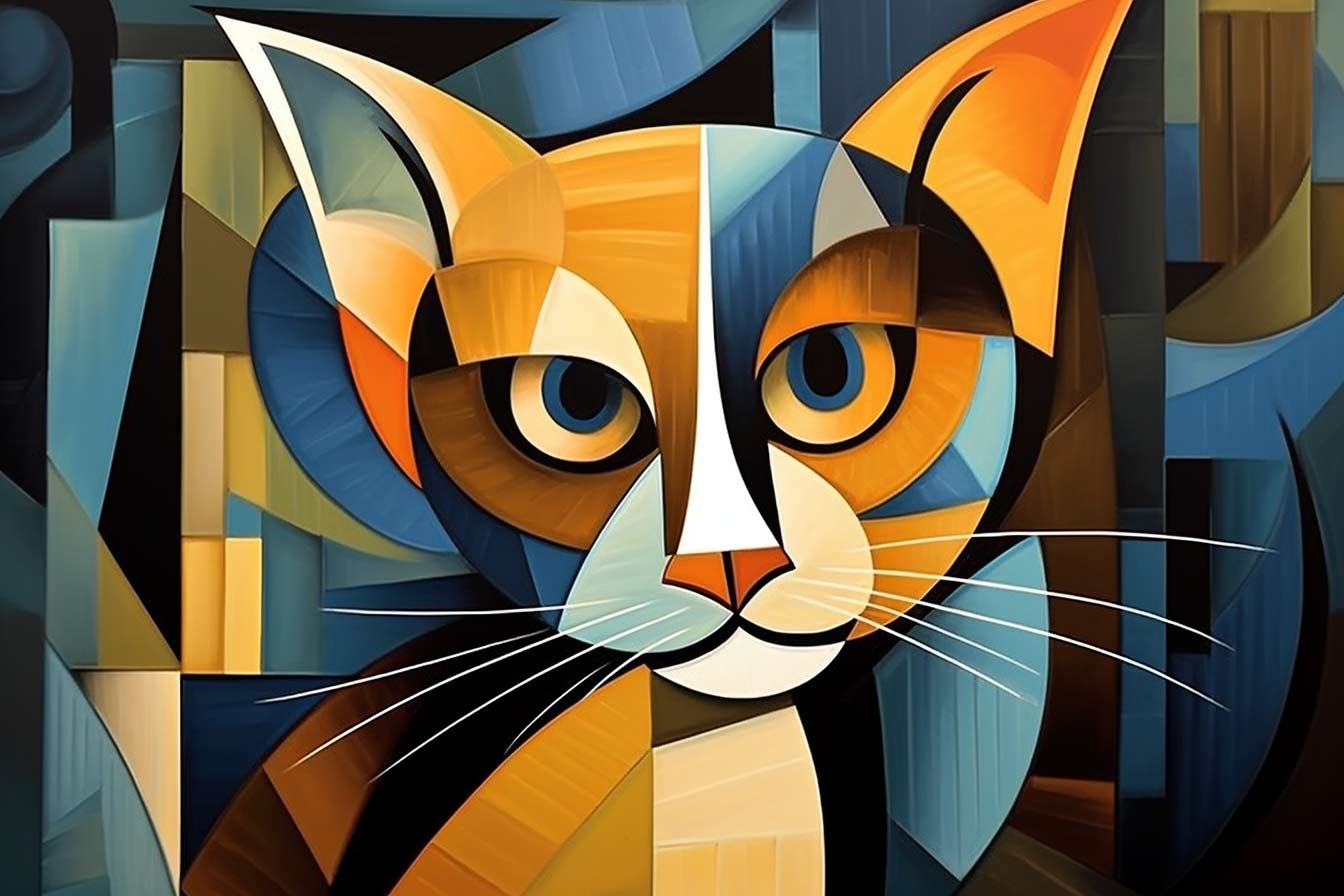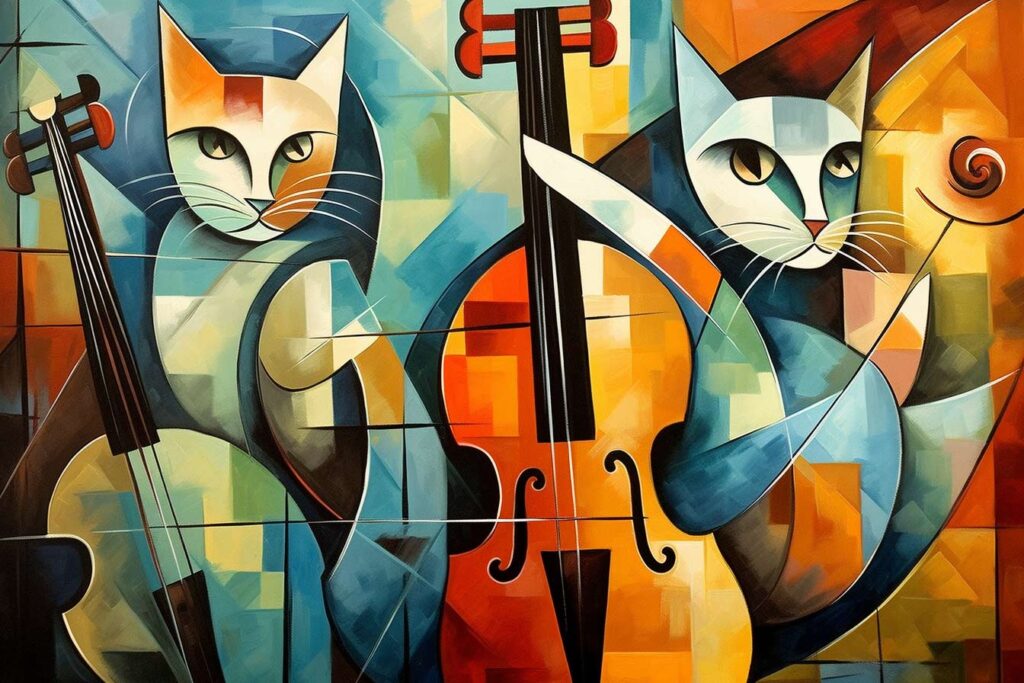The Endeavor of Recasting Reality
Cubism, an art movement pioneered by the virtuous hands of Georges Braque and Pablo Picasso, deconstructs the world around us into geometric forms, freeing the onlooker from the constraints of traditional perspective. This style offers an exhilarating approach to the portraiture of all things—even something as seemingly commonplace as a feline companion. Allow us to venture forth into this splendid labyrinth of shapes and forms, taking the humble cat as our subject and transforming it into a work of Cubist grandeur.
Analytical Cubism: The Dissection of Form
In the earlier stage of Cubism, known as Analytical Cubism, we unearth the essences of our subject through a process of artistic dissection. Analytical Cubism is thus aptly named for its analytical approach to the subject, reducing it into simplified geometric forms. In this realm, the cat is not just an assembly of fur and whiskers, but a complex figure composed of cubes, spheres, and pyramids.
Step One: Observation and Sketching
Observe your feline model attentively. Sketch out the cat in the most basic shapes. Focus on capturing its essence rather than its likeness. Lines and angles should supersede the fluffiness or the slenderness of its form. Here, you are the architect of a new reality, drafting the blueprint of what will be a Cubist masterpiece.
Step Two: Fragmentation
Once your sketch lays upon your canvas, set about dissecting the image further into smaller geometric units. Here, each part becomes an independent entity, free from its original context but still retaining its fundamental character. Fragment the cat’s face, limbs, and body, yet keep a mental catalogue of these pieces for they must converse fluently in the visual language of your painting.
Step Three: Multiple Perspectives
In traditional art, a single viewpoint dictates the representation. Analytical Cubism shatters this limitation. Represent the cat from various perspectives within a single frame. A paw may appear simultaneously from both a side and an aerial viewpoint, imbuing the painting with a rhythmic complexity.
Synthetic Cubism: The Reconstruction of Reality
Now, we progress to the second grand chapter in the Cubist narrative: Synthetic Cubism. Here, the artist synthesizes or brings together various elements into a coherent whole, often employing mixed media such as newspaper clippings, fabric, or even wood.
Step One: Establish a Base of Color and Shape
Begin by laying down broader patches of color upon which your fragmented feline forms will reside. Think of this as building a stage where each geometric actor will play its part. Lighter hues can symbolize heightened focus while darker shades can serve as the background chorus.
Step Two: Collage and Mixed Media
In the spirit of Synthetic Cubism, do not hesitate to introduce different materials into your work. For instance, actual snippets of fabric may serve as the cat’s fur, or newsprint could imbue your artwork with textural complexity. This opens up an additional layer of dialogue between the subject and the environment it inhabits.
Step Three: Unity in Complexity
Finally, assemble your geometric fragments and mixed media elements in such a way that the viewer can decipher the subject—a cat—within the synthesized complexity. Although each fragment operates independently, together they should manifest the identity of a feline presence, much like how a multitude of diverse citizens make up the grand tapestry of a nation.
Conclusion: The Grand Alchemy of Art
Thus, in following the tenets of both Analytical and Synthetic Cubism, you will transmute the ordinary visage of a cat into an extraordinary tableau of shapes, perspectives, and meanings. Through your artistic alchemy, you imbue the mundane with majesty, elevating a common household pet into an epitome of Cubist glory. Rejoice, for you have not merely painted a picture; you have recreated the universe within the bounds of your canvas.

All the works of art you see on this site have been created using artificial intelligence algorithms, capturing the essence and techniques of the great masters of Cubism.
